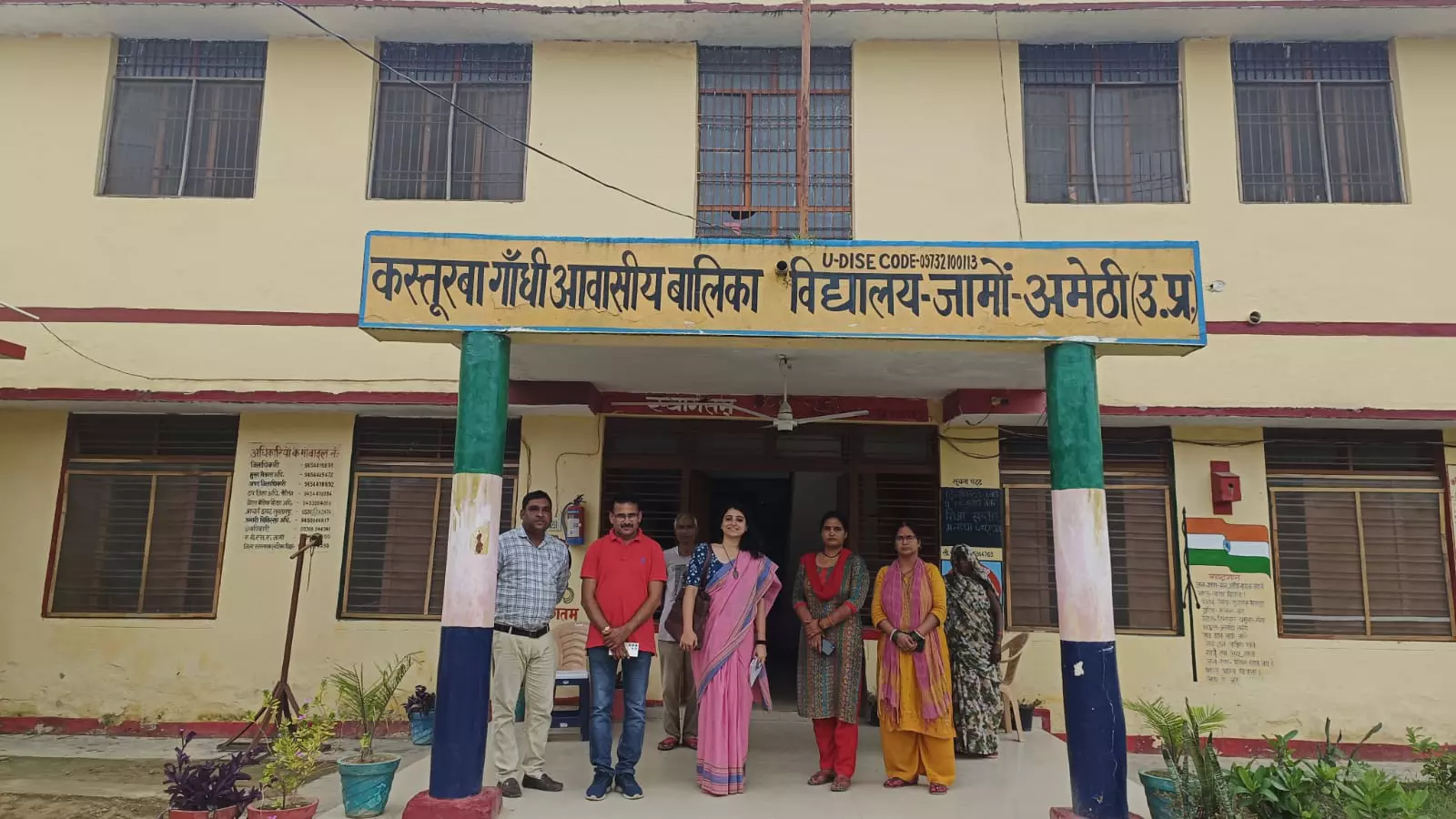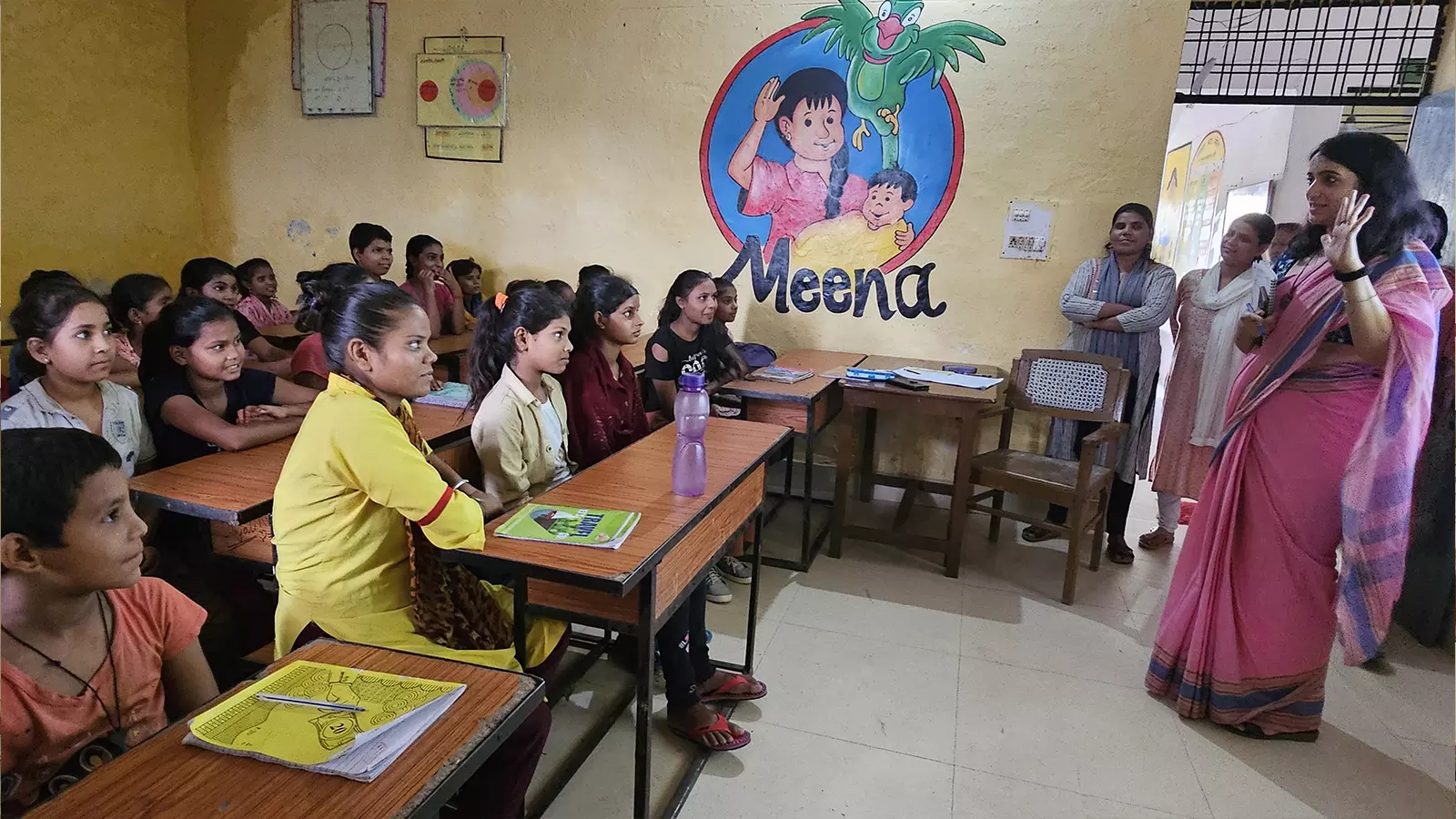
- Home
- India
- World
- Premium
- THE FEDERAL SPECIAL
- Analysis
- States
- Perspective
- Videos
- Sports
- Education
- Entertainment
- Elections
- Features
- Health
- Business
- Series
- In memoriam: Sheikh Mujibur Rahman
- Bishnoi's Men
- NEET TANGLE
- Economy Series
- Earth Day
- Kashmir’s Frozen Turbulence
- India@75
- The legend of Ramjanmabhoomi
- Liberalisation@30
- How to tame a dragon
- Celebrating biodiversity
- Farm Matters
- 50 days of solitude
- Bringing Migrants Home
- Budget 2020
- Jharkhand Votes
- The Federal Investigates
- The Federal Impact
- Vanishing Sand
- Gandhi @ 150
- Andhra Today
- Field report
- Operation Gulmarg
- Pandemic @1 Mn in India
- The Federal Year-End
- The Zero Year
- Science
- Brand studio
- Newsletter
- Elections 2024
- Events
As India celebrates Teachers Day, warden-teachers of KGBVs await empathy

“Rakhi ki chutti se laute na jab, gate dekh kar aansoo aa gaye… Yahi soche mam, ki kya mayka kya sausral, sab yahi ho gaya (after returning from Rakshbandhan holidays, while entering the campus, my eyes welled up thinking, I inhabit this place more than my parents or in-law’s home),” Seema ji, warden-incharge of one of the Kasturba Gandhi Balika Vidyalaya (KGBV) of Amethi, a district...
“Rakhi ki chutti se laute na jab, gate dekh kar aansoo aa gaye… Yahi soche mam, ki kya mayka kya sausral, sab yahi ho gaya (after returning from Rakshbandhan holidays, while entering the campus, my eyes welled up thinking, I inhabit this place more than my parents or in-law’s home),” Seema ji, warden-incharge of one of the Kasturba Gandhi Balika Vidyalaya (KGBV) of Amethi, a district in UP, told The Federal.
Another resident teacher who was appointed to teach Science but now teaches Science as well as English in another KGBV in the same district, narrated an incident which happened a month ago.

The two primary concerns shared by wardens from KGBVs across different states are the desire to be with family, and to become a permanent government employee. Photos: Anupama Bhardwaj
She, along with other teachers, woke up to this ‘surprise visit’ by an official at six in the morning. She said the official was a new joinee, hence keen on “catching someone red-handed”. It was shared that after some generic questioning around sanitation and food quality, the official expressed a desire to inspect the classrooms and dormitories. When he reached the dormitories, the one detail he flagged vociferously was that beds of teachers were separated from those of residents, though in the same hall. The warden-teacher said with a smirk, “Arre ekdum ghus ke kaise soyein, juyein, ho jaate hain… (We catch lice, how can we sleep so close to resident girls”),” and shared a laughter with her other resident teachers.
Such monitoring visits by senior officials often set the norms for residents, unofficially. Here two norms and messaging emerged, one for girls residing in KGBVs and the other for warden-teachers, the women running these institutes. First, it was considered vital that the female residents, between the age of 12 and 18 years, should be accompanied by wardens-teachers, round-the-clock. Second, the idea of privacy or boundary of work and home may not be available to warden-teachers of KGBV.
As platitudes about the importance of teachers and their role in shaping the lives of children are showered on Teachers Day, the warden-teachers of KGBVs remain neglected as they await someone to shape their own lives and careers.

The core idea behind the KGBV scheme was to reduce safety concerns around reaching school and provide quality education.
The KGBV scheme, introduced in 2004 by the government of India, provides the facility to have at least one residential school for girls from Classes VI-XII in every educationally backward block (EBBs). As per the U-DISE 2021-22 dashboard, the total number of secondary schools for girls, in rural area is 6,498. Whereas the total number of functional KGBVs is 2,498.
A closer reading of this data unravels the criticality of KGBV as an institution in ensuring education of young girls in rural areas across India. It is noteworthy that the residential schools draw their resources from the government, hence the fear of leakages results in extreme surveillance centered around warden-teachers.
As per the scheme, girls between the age of 12 and 18 from disadvantaged social groups, dropouts, never-been-to-school or without caregivers are to be admitted at KGBV. In most of these schools, girls from grade six to eight live and study on the campus. Whereas, the senior grades operate either like hostels or both hostel and school depending on many other factors. Each KGBV has about 400 girls and five-six warden-teachers on an average.
The core idea behind the KGBV scheme was to reduce safety concerns around reaching school and provide quality education. In my visits to KGBVs of different states, the ‘safety lense’ colour the design, the rules, and bookkeeping methods, and the monitoring norms. Most of the KGBVs have resident teachers, non-resident teachers, guard/peon, accountant and cook. All these employees are women, except accountant and guards, in some cases. These institutions are usually a two-storey building with courtyard ground or a small ground in the front. Mostly, the responsibility to look after the facility lies with the warden.
The ground-floor functions as an academic arena and the top floor as a residential section. The underlying assumption of the KGBV directive has been that girls-only atmosphere ensures safety. The natural extension of this directive also implies that the resident women-teachers, can naturally play the role of subject teachers, of guardians, and of primary caregiver, superseding all roles. However, the scheme perhaps missed giving due attention the basic need of the drivers of these institutions - warden-teachers.
Through KGBVs, the government has definitely created a conducive environment for girls from constant fear of everyday traveling, managing household chores, care work or poor financial condition Unlike day schools, the structural impediments behind dropout of young girls are removed hence KGBV in the truest sense became a safe haven for girls from rural areas. However, the route from safety to empowerment in this space lies with wardens-teachers The expectation from them to surpass the boundaries of caste and class by the fact of cohabitation, is actually of a deeper social change. Hence, many NGOs keen on working with adolescent girls have found KGBVs as an active and sustainable site for women-centric interventions.
Not just NGOs, Edtech companies like Khan Academy, and Indian Institutes of Technology as well as government schemes eye these teachers as the right agent to pass on the knowledge and bring change,
The two primary concerns shared by wardens from KGBVs across different states are the desire to be with family, and to become a permanent government employee. Demand of leaves or for salary hike almost become corollary to the aforementioned concerns. The full-time warden-teachers are paid about Rs 24,000 per month, while the part-time ones are paid Rs 8,000 per month. Both groups lack job security due to the temporary nature of their services.
Many resident warden-teachers depend on their extended relatives for taking care of their children and household which in their cases become a paid ‘favour’ as they are ‘amau (earning) mothers. The attrition rate among these warden-teachers is low despite the non-permanent nature of their jobs.
“Sabhi mahilayein temporary hi hain KGBV me, lekin badalti kam hi hain… (all of them are on ad-hoc basis but they still continue),” said the district coordinator for Girls Education in of the districts of Uttar Pradesh. The DC chose to speak on the condition of anonymity.
Though a general despair around losing familial and social connections was apparent. In the same breath they also mention how being with girls 24*7 puts them in a tricky spot.
The girls in pubertal age, accustomed to an agrarian environment feel uneasy settling in a rule-bound educational atmosphere. The active-passive anger emanating from that uneasiness is often targeted towards them. Hence, becoming a mother and friend at the same time often becomes the natural and organic process.
Kehkasha (name changed), a girl studying in Class 8, expressed this fondness with her teacher during one of the life skill session, that she felt respected by her teachers especially when they listened to her ongoing issues with her parents.
The warden-teachers becoming the safe space for girls in psychological sense, and them being unable to hold on to their personal ties in residential schools have been epitomised by the famous Hindi novelist, Usha Priyamvada.
In her magnum opus Pachpan Khambein Laal Deewarein, first published in 1961, through the protagonist, Priyamvada depicts this life of detachment and loss of due to duty laden atmosphere in personal and professional life.
The title somewhere encapsulates the idea of being around pillars and walls of a hostel somewhere pushes the protaganist to become one with that. The lucid ties which come so naturally to any adult become a far-fetched aspiration and then a repressed dream eventually turns her into a static life -less wall which only exists as spectator and supporter.
Similarly, Nirmal Varma’s Latika in Parinde, first published in 1959, captures the life of a young resident teacher who witnesses a romantic affair blooming by her side whereas in her own personal life she struggles to engage with the proposal coming her way.
The developmental bureaucratic gaze towards KGBVs may not allow the poetic reading of mundane concerns raised by warden-teachers however dehumanization through unbound care work in their roles as warden-teachers cries for an empathetic re-reading.
Since the responsibilities are so nuanced, there is a call for a deeper feminist gaze towards KGBVs.
The emancipatory potential of KGBVs lies in shifting this gaze from surveillance to supportive supervision. One remarkably missing element in KGBVs is the picture of Kasturba Gandhi, after whom these institutions are named. The ‘miss’ becomes perplexing initially but the explanation emerges out of these conversations. The edifice of girl’s education stands on motivation and wellbeing of these warden-teachers. It is high time, we stop shadowing the daughters of Kasturba.
